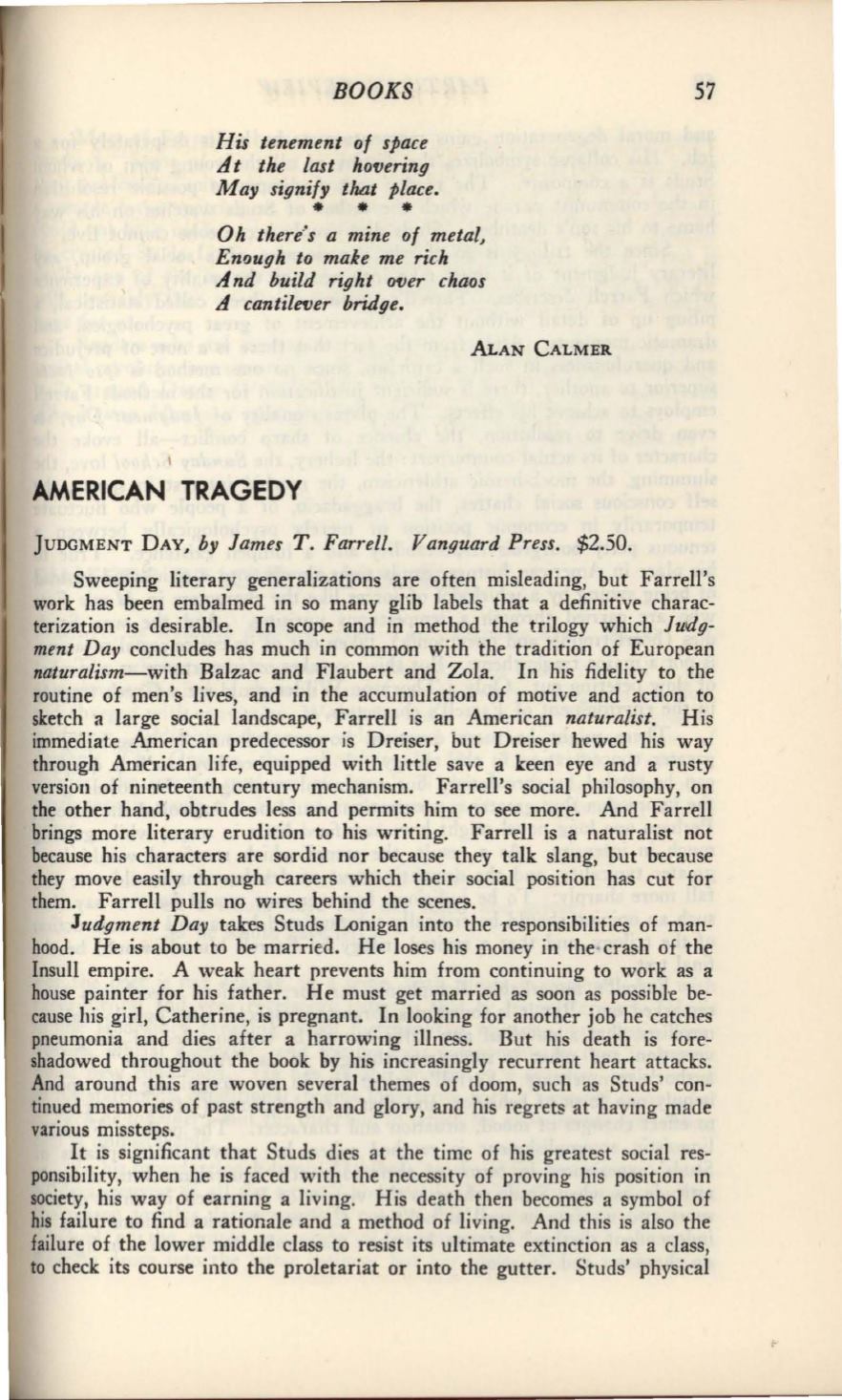
BOOKS
His tenement of space
At the last hovering
May signify that place.
•
•
•
Oh there·s a mine of metal_
Enough to make me rich
And build right OfJer chaos
A cantilever bridge.
ALAN CALMER
AMERICAN TRAGEDY
jUDGMENT DAY,
by James T. Fan·ell. Vanguard Press. $2.50.
57
Sweeping literary generalizations are often misleading, but Farrell's
work has been embalmed in so many glib labels that a definitive charac–
terization is desirable. In scope and in method the trilogy which
Judg–
ment Day
concludes has much in common with the tradition of European
naturalism-with
Balzac and Flaubert and Zola. In his fidelity to the
routine of men's lives, and in the accumulation of motive and action to
sketch a large social landscape, Farrell is an American
naturalist.
His
immediate American predecessor is Dreiser, but Dreiser hewed his way
through American life, equipped with little save a lceen eye and a rusty
version of nineteenth century mechanism. Farrell's social philosophy, on
the other hand, obtrudes less and permits him to see more. And Farrell
brings more literary erudition to his writing. Farrell is a naturalist not
because his characters are sordid nor because they talk slang, but because
they move easily through careers which their social position has cut for
them. Farrell pulls no wires behind the scenes.
Judgment Day
takes Studs Lonigan into the responsibilities of man–
hood. He is about to be married. He loses his money in the crash of the
lnsull empire.
A
weak heart prevents him from continuing to work as a
house painter for his father. He must get married as soon as possible be–
cause his girl, Catherine, is pregnant. In looking for another job he catches
pneumonia and dies after a harrowing illness. But his death is fore–
shadowed throughout the book by his increasingly recurrent heart attacks.
And around this are woven several themes of doom, such as Studs' con–
tinued memories of past strength and glory, and his regrets at having made
various missteps.
It
is significant that Studs dies at the time of his greatest social res–
ponsibility, when he is faced with the necessity of proving his position in
society, his way of earning a living. His death then becomes a symbol of
his failure to find a rationale and a method of living. And this is also the
failure of the lower middle class to resist its ultimate extinction as a class,
to check its course into the proletariat or into the gutter. Studs' physical


